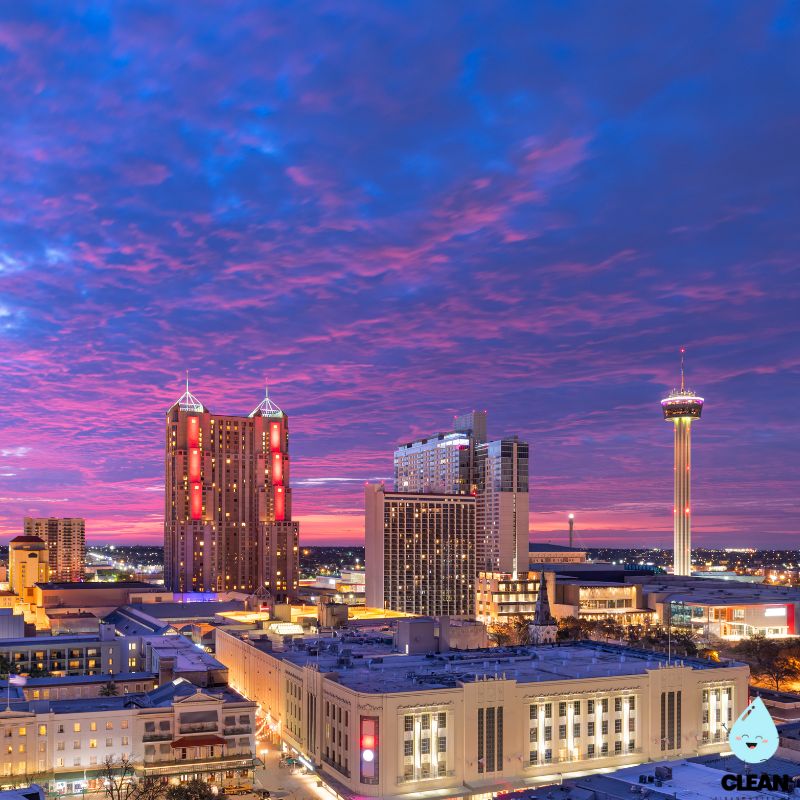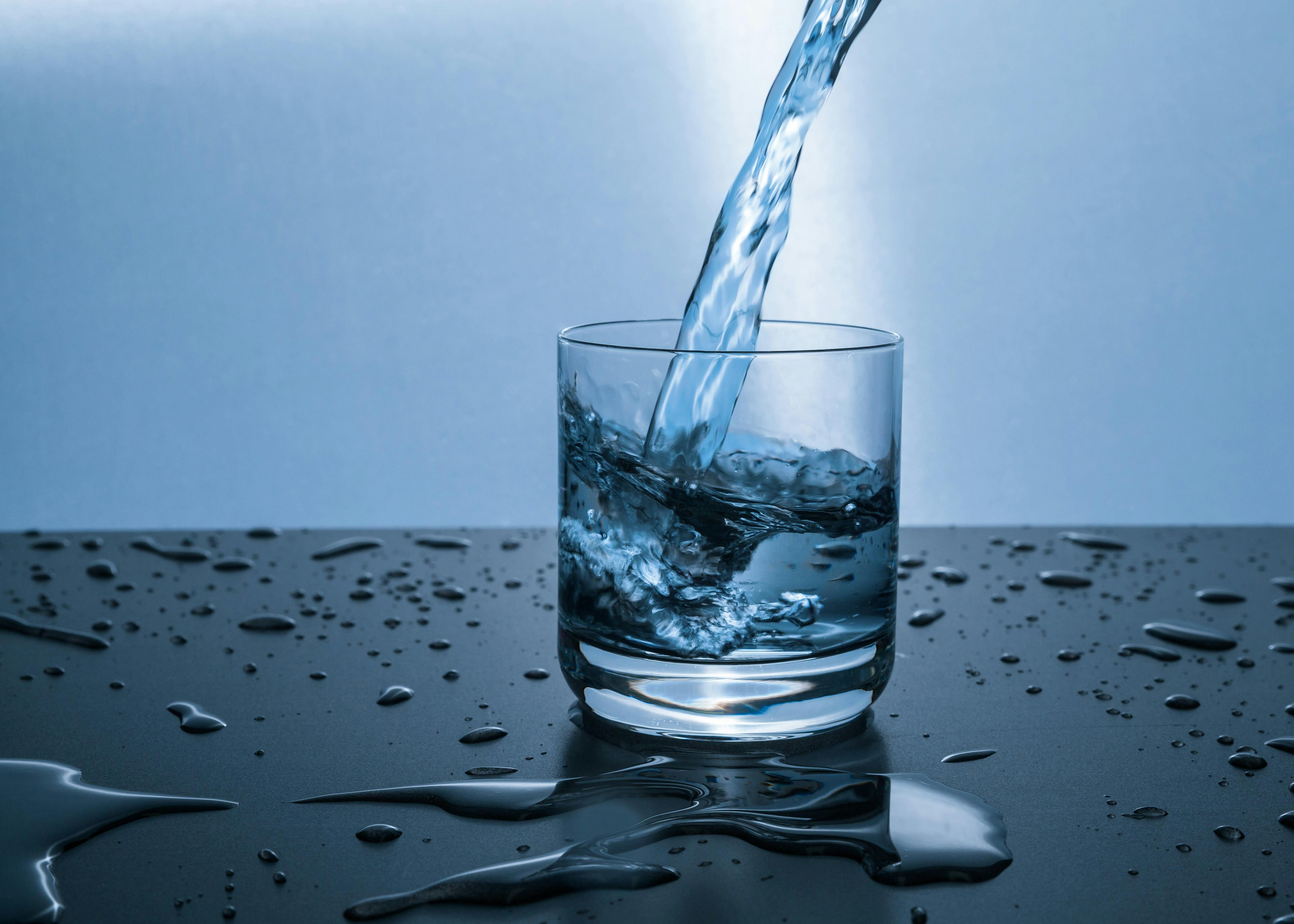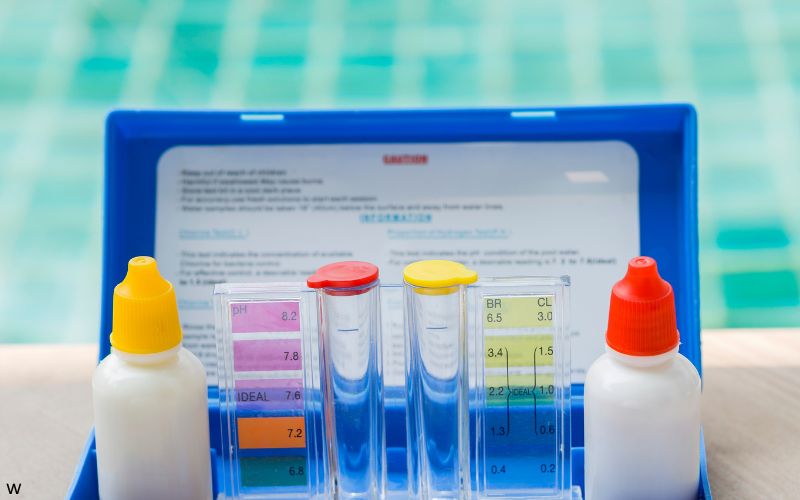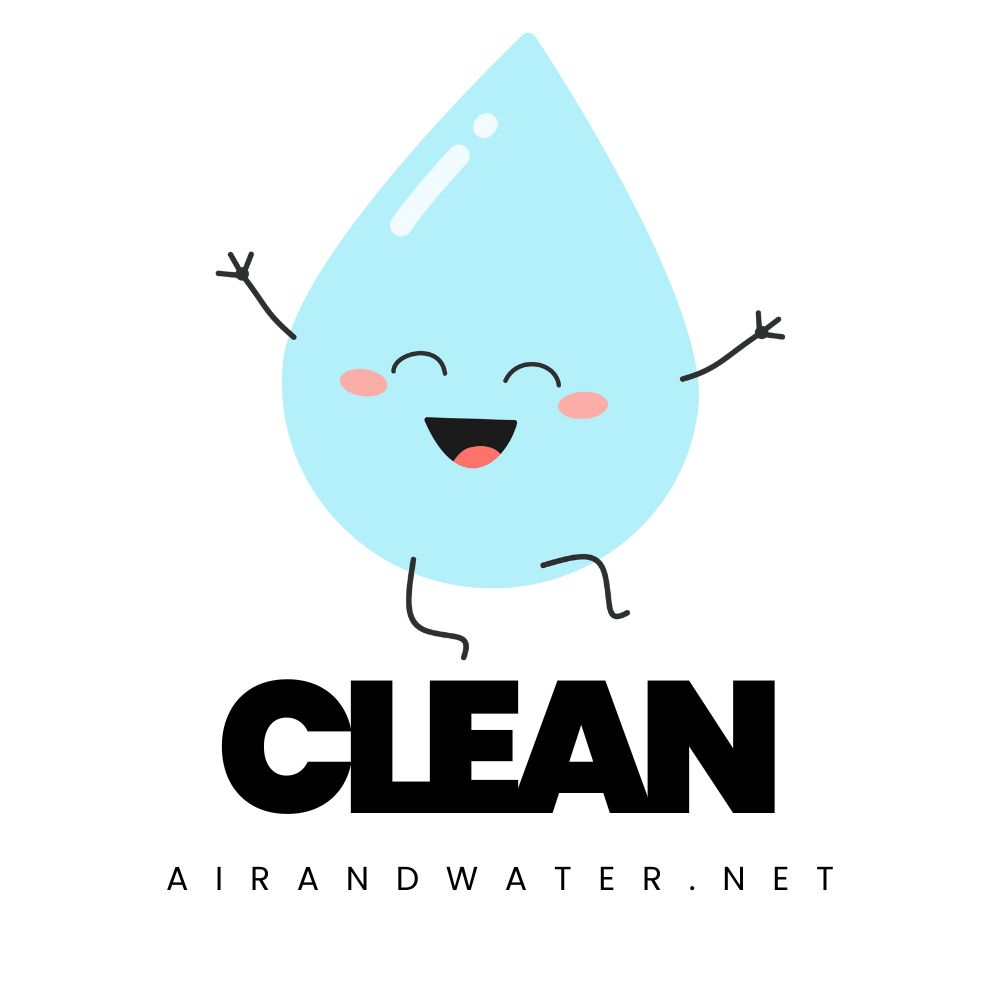San Antonio Water Quality at a Glance
manageable concerns
Is San Antonio Water Safe to Drink?
Generally Safe with Key Concerns – San Antonio’s water system received no violations in 2024 and draws primarily from the pristine Edwards Aquifer. However, key contaminants include chromium-6 at 136 ppt (7x higher than health guidelines), lead levels at 3.25 ppb in 10% of samples, and disinfection byproducts (TTHMs) that exceed EWG recommendations. PFAS testing shows minimal contamination with only one Castle Hills well at EPA limits.
⚠️ Key Concerns for San Antonio Residents
- Chromium-6 (Hexavalent): 136 parts per trillion – nearly 7 times higher than California’s health guideline; linked to cancer risk
- Lead Contamination: 3.25 ppb in 10% of samples; particularly concerning for children and pregnant women despite EPA compliance
- Disinfection Byproducts: Total trihalomethanes (TTHMs) exceed Environmental Working Group recommendations but within EPA limits
- Industrial Legacy: River City Metal Finishing site still contaminates ~1,000 residents with chromium-6, cadmium, lead, and cyanide 20+ years later
Read the full report below for detailed analysis, city-specific data, and actionable recommendations for San Antonio residents.
San Antonio – Texas – Water Quality Report 2025: PFAS Testing, Infrastructure Concerns & Safety across your city
San Antonio, the nation’s seventh-largest city, serves over 1.5 million people through the San Antonio Water System (SAWS), one of the most innovative municipal water utilities in the United States. The city’s water infrastructure includes nearly 9,000 miles of water mains, eight water recycling centers, and multiple water treatment facilities, delivering approximately 136.5 million gallons daily.
Unlike many cities that rely on surface water, San Antonio draws most of its water from the Edwards Aquifer, a unique underground water source that provides some of the purest groundwater in the nation. The aquifer, which stretches across 11 counties, is so pure that it often requires minimal treatment. San Antonio has also emerged as a national leader in water conservation and sustainability, with one of the most comprehensive water recycling programs in the world and a commitment to achieving water neutrality by 2040.

San Antonio Water Quality: Current Status (2024-2025)
Latest Testing Results
- Lead Levels: The most recent testing period (January-December 2024) showed 90th percentile lead levels of 3.25 parts per billion (ppb), significantly below the EPA action level of 15 ppb, though health experts note no safe level exists for children.
- Testing Scope: SAWS conducts comprehensive water quality monitoring across 390 sites monthly for bacteria testing, plus extensive testing for chemical contaminants across its service area.
- Compliance Status: San Antonio’s water meets all federal and state drinking water standards, with SAWS receiving no violations in 2024, consistently ranking among the best in Texas for water quality and reliability.
Edwards Aquifer Excellence
- Naturally Pure Source: The Edwards Aquifer, providing about 80% of San Antonio’s water supply, is protected by recharge zones that naturally filter water through limestone layers over thousands of years.
- Minimal Treatment Required: Aquifer water typically requires only chlorination for disinfection, making San Antonio’s water some of the least processed municipal water in America.
- Aquifer Protection: Strict land development regulations over the recharge zones and extensive watershed protection programs ensure long-term source water quality.
Water Sustainability Leadership
- Recycled Water System: SAWS operates the nation’s largest direct recycled water system, producing over 50 million gallons daily of ultra-pure recycled water through advanced membrane bioreactor and reverse osmosis technology.
- Vision2040 Initiative: The comprehensive water plan aims to achieve water neutrality, meaning all growth will be supplied through recycled water, conservation, and alternative supplies without increasing raw water withdrawals.
- Innovation Programs: SAWS invests heavily in innovative technologies including aquifer storage and recovery, smart irrigation systems, and real-time leak detection across the distribution network.
Infrastructure Excellence
- Modern Distribution System: With most infrastructure built after 1960, San Antonio has significantly fewer aging pipe issues compared to older cities, though the system still lost 19.2 billion gallons in 2024 through various causes.
- Smart Water Network: SAWS has deployed over 600,000 smart meters with leak detection capabilities and uses advanced analytics to predict and prevent main breaks.
- Reservoir Management: Multiple surface reservoirs serve as backup supplies and help protect against extreme drought conditions while supporting aquifer conservation.
Environmental Stewardship
San Antonio’s commitment to environmental protection extends beyond water treatment to comprehensive watershed management, invasive species control in the aquifer recharge zones, and educational programs that have reduced per capita water use by over 40% since 1990. The city’s integrated approach combines cutting-edge technology with nature-based solutions to ensure water security for future generations while maintaining exceptional water quality standards.
Recommendations for San Antonio Residents

Consider Filtration for Key Contaminants
While San Antonio’s Edwards Aquifer water is naturally pure, consider filtration for chromium-6 (136 ppt – 7x health guidelines), lead concerns, and disinfection byproducts if you have health sensitivities or want extra precaution.

Conserve Water
Follow drought restrictions and consider xeriscaping with native plants. Take advantage of SAWS rebates for efficient fixtures, smart irrigation controllers, and rain harvest systems.

Monitor Your Usage
Use the MySAWS app to track your water consumption, receive leak alerts, and participate in conservation challenges. Smart meters help detect leaks before they become costly problems.

Use Recycled Water
Access recycled water stations for landscape irrigation when available. SAWS recycled water is ultra-pure and perfect for outdoor use, helping preserve our pristine aquifer water for drinking.

Test When Needed
While San Antonio water is exceptionally safe, private well owners should test annually. Contact SAWS at (210) 704-7297 for information about municipal water testing or private well resources.
Quality News About Your Water
Get the comprehensive water quality news coverage you need with our dedicated US Water News Service. From coast to coast, we deliver in-depth reporting and expert analysis on PFAS contamination, EPA regulatory changes, infrastructure developments, and emerging water safety issues affecting communities nationwide. While mainstream media only covers the biggest stories, we provide the detailed, ongoing coverage that helps you understand the full scope of America’s water challenges. Whether you’re a concerned citizen, water professional, or community leader, our daily updates and analytical insights keep you informed about the issues that matter most to public health and environmental safety.
Frequently Asked Questions
Is San Antonio’s tap water safe to drink?
Yes! San Antonio’s water is among the purest municipal water in the nation. About 80% comes from the Edwards Aquifer, which naturally filters water through limestone for thousands of years. The remaining 20% comes from wells and surface water sources, all treated to meet or exceed federal standards.
SAWS conducts comprehensive water quality testing and publishes results in our annual Water Quality Report. The water typically requires only minimal treatment (mainly chlorination) because of the exceptional source quality. However, be aware of contaminants like chromium-6 and lead that may exceed health guidelines despite meeting EPA standards.
Why does San Antonio have some of the best water quality?
Several factors contribute to San Antonio’s exceptional water quality:
• Edwards Aquifer: Our primary water source is naturally filtered through limestone over thousands of years, removing contaminants and adding beneficial minerals.
• Protected Watersheds: Strict regulations in the aquifer recharge zones prevent contamination at the source.
• Modern Infrastructure: Most of our water system was built after 1960, resulting in fewer aging pipe issues.
• Advanced Testing: SAWS monitors for over 200 compounds, far exceeding regulatory requirements.
• Minimal Processing: Less treatment preserves the natural quality of our source water.
What is San Antonio doing about water sustainability?
San Antonio is a global leader in water sustainability through our Vision2040 initiative, which aims to achieve water neutrality. Key components include:
• World’s Largest Direct Recycled Water System: Producing over 50 million gallons daily
• Conservation Leadership: Reduced per capita water use by 40% since 1990
• Smart Technology: 600,000+ smart meters with leak detection
• Aquifer Storage: Banking excess water underground during wet years
• Innovation Hub: Testing cutting-edge water technologies
Our goal: All growth will be supplied through recycled water and conservation without increasing withdrawals from our natural sources.
Are there water use restrictions in San Antonio?
San Antonio operates under a year-round water conservation ordinance with tiered restrictions based on drought conditions. Current requirements include:
• Watering Schedule: Twice per week based on address (odd/even)
• No watering between 10 AM – 8 PM
• No water waste: Running water on sidewalks, streets, or unused areas
• Drip irrigation exemptions for water-efficient systems
During declared drought stages, additional restrictions apply. Check www.saws.org for current stage levels and specific requirements. Violations can result in fines up to $500.
Contaminants of Concern

Chromium-6 & Lead
Source: Chromium-6 from industrial sources and natural mineral deposits; lead from older plumbing fixtures and service lines
Health Effects: Chromium-6 is carcinogenic at 136 ppt (7x health guidelines). Lead at 3.25 ppb in 10% of samples poses risks especially to children and pregnant women
Current Status: Both meet EPA standards but exceed stricter health guidelines. Consider filtration systems for additional protection

Disinfection Byproducts
Source: Trihalomethanes (TTHMs) form when chlorine disinfectant reacts with naturally occurring organic matter in water
Health Effects: Long-term exposure may increase cancer risk and cause liver/kidney issues. Levels exceed EWG recommendations but remain within EPA limits
Current Status: EPA compliant but health-conscious residents may consider carbon filtration to reduce exposure
Please read – our information
The information presented on cleanairandwater.net is compiled from official water quality reports, trusted news sources, government websites, and public health resources. While we strive for accuracy and thoroughness in our presentations, we are not scientists, engineers, or qualified water quality professionals.
Our mission is to present water quality information in an accessible, real-world format that helps people understand what’s in their water and make informed decisions about their health and safety. We believe that complex environmental information should be available to everyone in a format that’s easy to understand.
We make every effort to ensure our content is current and accurate, but we cannot guarantee that all information is complete or error-free. This website should not replace official communications from your local water utility or health department. We always recommend consulting official sources for the most up-to-date information regarding your specific water system.
Clean Air and Water is not liable for any unintentional errors, omissions, or outdated information. The content on this site is provided for informational purposes only and should not be considered professional advice.


